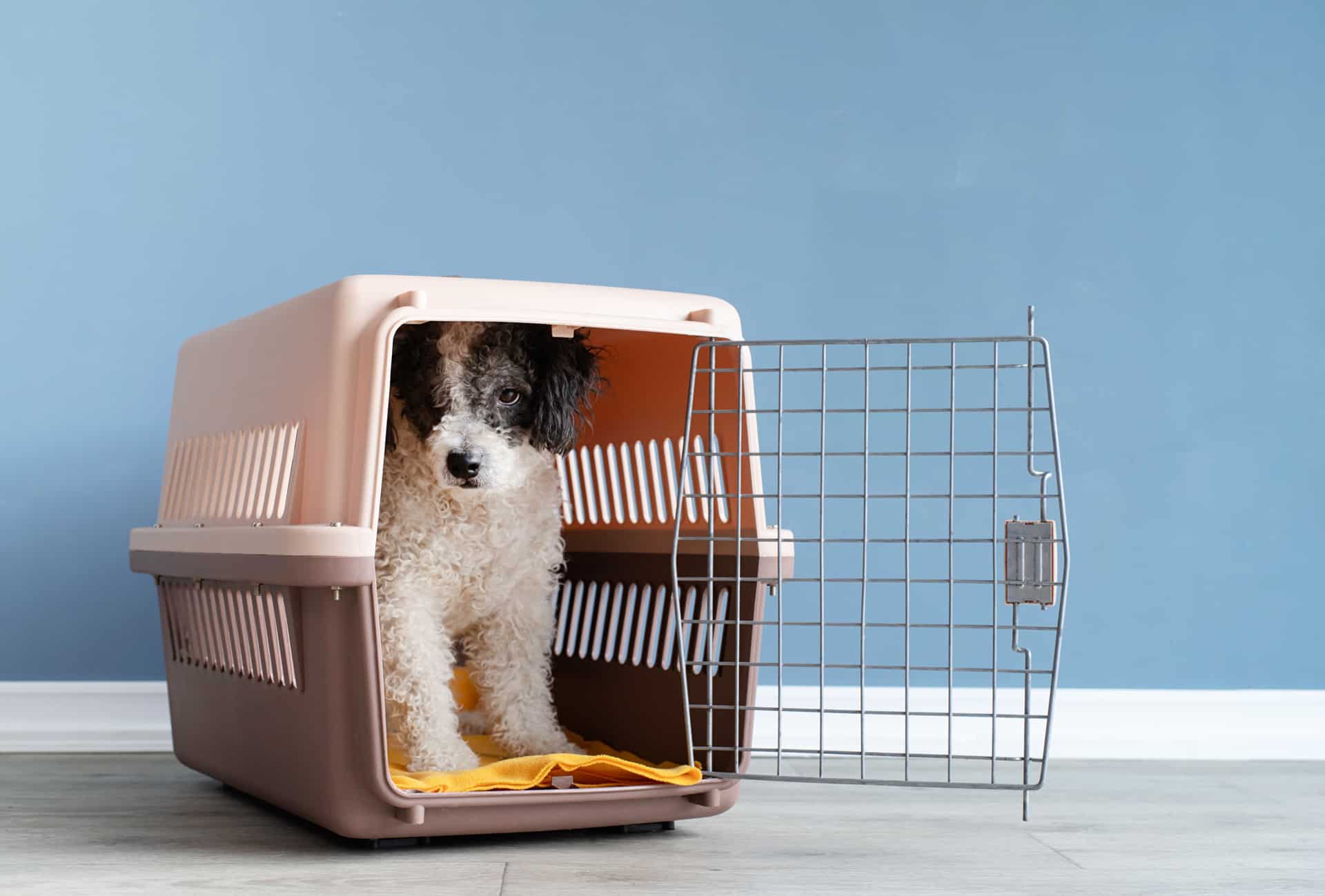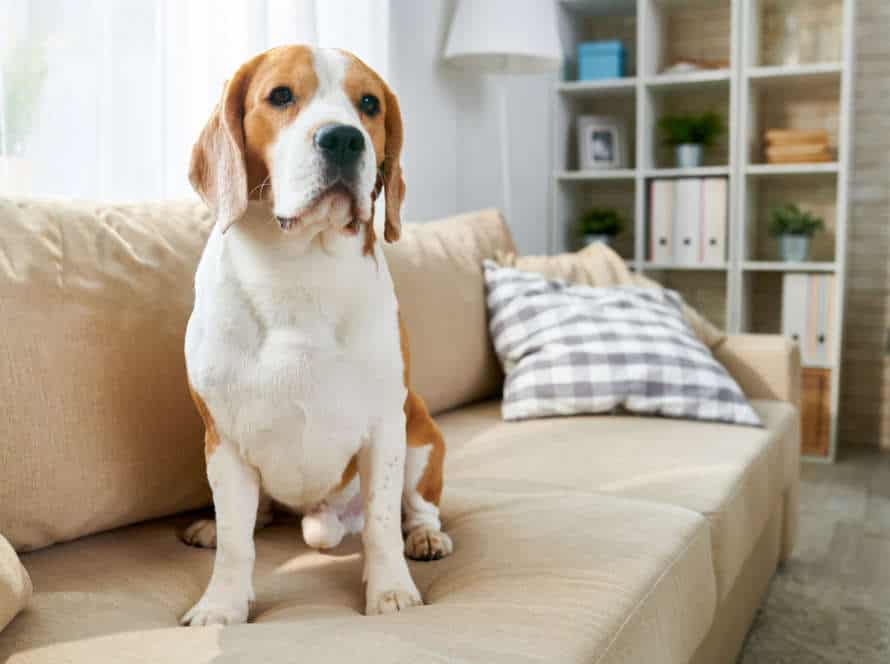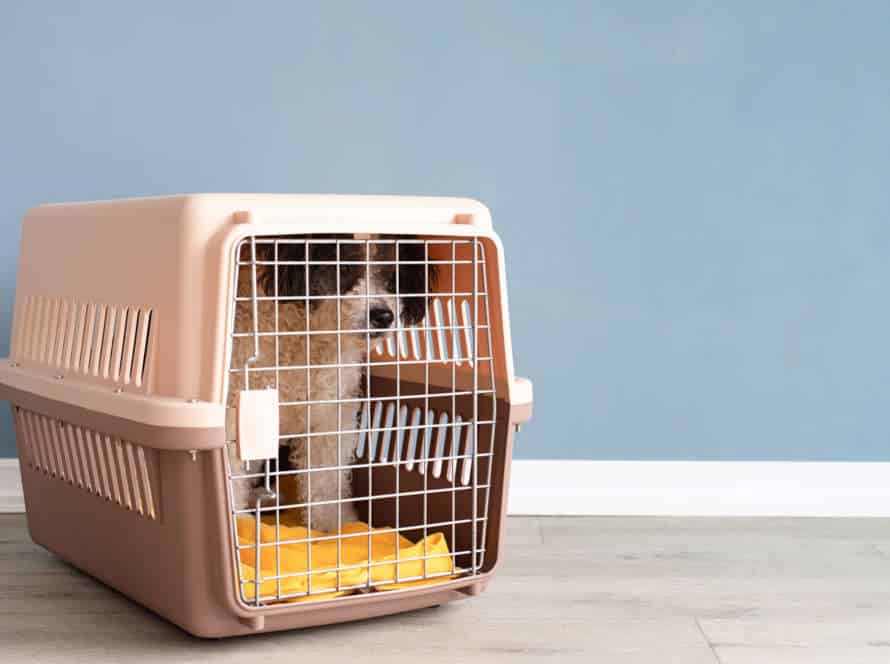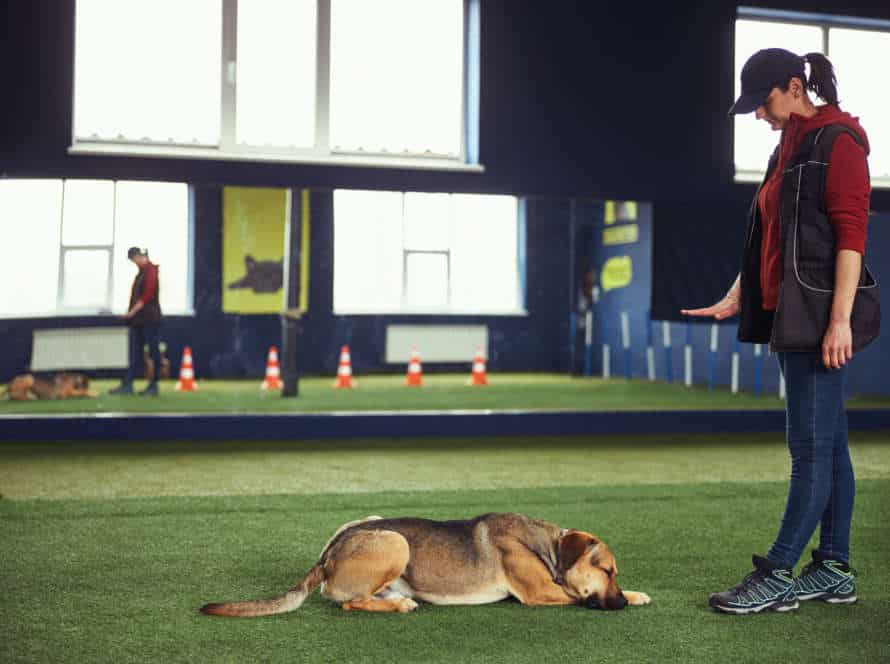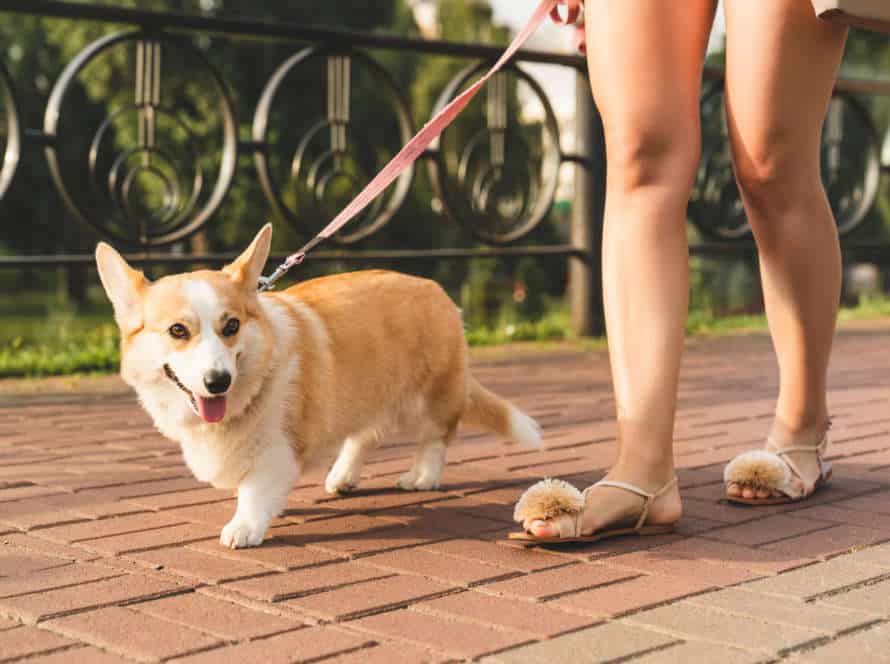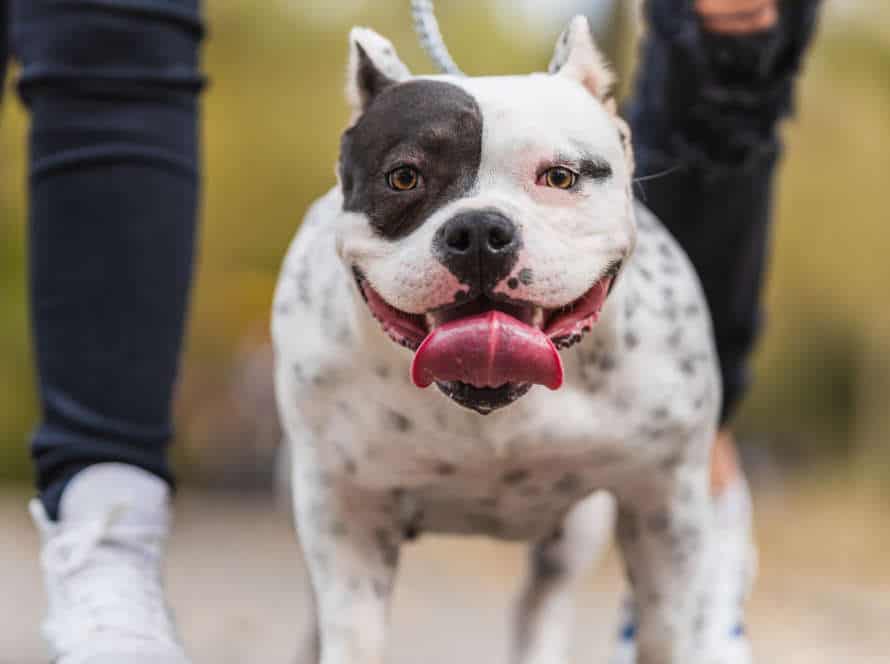How to Create a Safe Room for Your Dog Without a Crate
Creating a safe space for your pup, no crate required, is a great way to give them a comfy spot to chill and feel secure. Here’s how:
- Choose a quiet, dimly lit room where your pup can relax in peace.
- Check the room is free from anything dangerous, like chemicals, sharp objects and electrical wires.
- Provide cozy bedding like a dog bed or blankets for them to snooze on.
- Pop some of their fave toys and treats in the room to keep them amused and content.
- Add a white noise maker or soothing music to create a calming atmosphere.
- Make sure the room is well ventilated and temps are just right.
- Plus, put a baby gate or pet gate at the door to make an invisible barrier while still giving visibility to your pet.
Selecting the Right Space for a Safe Room
Build a secure space for your pup sans crate! A great way to ensure your dog’s comfort and safety. Choose the right room in your home. For a safe haven, it should be secure, nice and comfy. Here are tips for selecting the ideal room for a safe room!
Determine if a Safe Room is Necessary based on Dog’s Behavior
Do you need a safe room for your pup? It depends on their behavior and if they get stressed in certain scenarios. If they become aggressive, fearful, or destructive, during storms, fireworks, or when they’re alone, then yes. Here are some tips:
- Pick a silent part of the house with no outside door or windows.
- Make sure it’s spacious enough for them to move and lie down.
- Remove anything that could be hazardous.
- Throw in a comfy bed or crate for them to relax.
- Give them toys, puzzles, or chews to keep them entertained.
- Music and pheromone diffusers can help calm their stress.
A safe room gives your pup a sense of security and a safe place in tough times.
Assess the Available Space in Your Home
Assessing the space in your home is important when creating a safe room for your dog. This area should be secure, comfortable, and designated for your pet to go to when they feel anxious. Consider these factors:
- Size: Pick the right size based on breed and size of your pup.
- Accessibility: Make sure the room is easy to get to, preferably in a central location.
- Security: Ensure the space can be securely closed off with no potential hazards or escape routes.
- Comfort: Provide bedding, toys, and water to make it a welcoming spot.
- Noise: Choose a quiet area away from loud or high traffic areas.
- Lighting: Select a well-lit, soothing space for your dog.
Once you’ve got the right space, introduce your pup and slowly increase time spent there. Pro-tip: Use pheromone sprays or diffusers to relax your pup in their safe room.
Consider Accessibility and Convenience for Both Owner and Dog
Creating a safe room for your pup? Keep access and convenience in mind. Here are some tips:
- Accessibility: Pick a room your pup spends time in – they’ll feel comfy.
- Convenience: Make sure you can access it easily – cleaning and emergencies.
- Space: Enough room to move and sleep – no hazards.
- Lighting & Ventilation: Adequate lighting and ventilation – healthy and dry.
Plus, add bedding and toys – cozy retreat!
Designing the Safe Room
Design your pup’s ultimate safe room! It’s fun and rewarding. Make sure it’s secure and comfy. Consider your dog’s size, how much room they need to play, and what furniture/items fit. This article will help you create a pup-friendly space without a crate.
Choosing Safe and Dog-Proof Materials for the Room
Designing a safe room for your pup? Choose materials that are durable and dog-proof. Here are some tips:
- Flooring: Non-slip and easy-to-clean. Avoid carpets as they can trap odors and stains from pet accidents. Hardwood, tile, vinyl, or rubber are waterproof and scratch-resistant.
- Walls: Highly durable and washable paint. Semi-gloss or satin finish can be wiped clean easily.
- Furniture: Sturdy and not chewable/destroyable. Avoid materials that can snag or tear, like leather or silk. Go for robust fabrics like canvas or microfiber.
- Style and comfort are important too! Pick materials that your pup’s playful nature won’t damage.
Pro tip: Add plenty of fun toys and accessories to make the room inviting.
Laying Out the Safe Room for Maximum Comfort and Relaxation for the Dog
Designing a safe room for your pup? Here’s what to consider:
- Choose a quiet, calm spot away from busy areas.
- Add a comfy bed in a corner.
- Provide enough room to move, but no clutter!
- Keep the space well-ventilated and cool.
- Include a bowl of water and doggy snacks.
- Remove any hazardous objects.
- If they have separation anxiety, leave a familiar item.
- Create a soothing atmosphere with classical music or nature sounds.
- Pro-tip: Use the safe room to train your pup to relax and stay calm. Gradually increase their time there and reward them with treats and positive reinforcement!
Ensuring Proper Ventilation and Temperature Control in the Safe Room
Ventilation & temperature control are essential when designing a safe room for your pup. Here’s how to guarantee your furry pal’s coziness & safety:
- Grab a room with windows that open, or add vents to increase airflow.
- Never leave your dog in a room with no AC/heating.
- Use a fan or air purifier for fresh air.
- Place a thermometer to measure temp, staying between 60-75F.
- Put a blackout curtain to keep out direct sunlight & heat.
A well-ventilated & temperature-controlled room creates a comfy & safe environment for your pup, reducing stress & preventing accidents. Remember to always supervise your pup & give them water & toys.
Pro Tip: It’s better to be extra cautious & make the room slightly cooler than too warm.
Essential Features for a Safe Room
Do you want to give your pup their own special space? A safe room is the perfect solution! Keep these essential features in mind when constructing the room: This article will explain them all. Let’s dive in and discover the most important elements to consider when building your pooch their own safe room.
Provide Your Dog with Plenty of Soft Surfaces to Lay On
Making sure your pup has plenty of soft places to rest is key for a safe space that doesn’t include a crate. Not only does this give them a comfy spot to sleep, it also safeguards them from harm. Here’s how:
- Identify a secure area in your house for the safe room.
- Select the right soft surfaces, such as dog beds, blankets, and rugs, and put them in the allocated area.
- Think about getting a few different types of surfaces with varied thickness and softness so your pup can pick their own spot.
- Make sure there are no sharp edges, dangerous materials, or choke hazards in the safe room.
- Give your dog the chance to explore the room and get used to the new space.
Furnish the Safe Room with Dog-Friendly Toys and Activities
A Safe Room for your pup can soothe worries and give them a safe spot. But, just four walls and a door isn’t enough.
To make it more comfy, add dog-friendly activities and toys. Here are some ideas:
- Puzzle toys to stimulate their mind. Fill it with treats or kibble to make it exciting.
- Chew toys, since chewing is natural and can help relax them.
- Interactive toys for bonding and mental stimulation. Play a game of tug-of-war or fetch to reduce stress and show them love.
Also, leave a radio or TV on for white noise. Plus, try playing calming music for a tranquil atmosphere.
Offer Plenty of Food, Water, and Treats for Your Dog in the Safe Room
Making a safe room for your pup is essential for his well-being and security. Here’s what should be included:
- Roomy: Provide enough space for his food/water bowls, bed, and a few toys.
- Light & Ventilation: Windows for natural light and proper ventilation.
- Soft & Secure Floors: Non-slip and soft flooring to prevent injuries.
- Food/Water/Treats: Keep him comfy with fresh water, food, and treats.
- Toys: Toys to keep him entertained and avoid destructive behaviors.
Follow these tips to give your pup a safe, inviting room – without a crate!
Plus – install a camera so you can monitor him when you’re away.
Managing Your Dog in the Safe Room
A secure space for your pup? No problem! No need to buy a crate – just create a comfy area that your pup can call their own. Make sure it’s spacious; your pup needs room to move and play. Add treats, toys and other fun stuff to keep them entertained. Easy-peasy and cost-effective too!
Here are the best tips for doing this:
Introduce Your Dog to the Safe Room
Creating a place for your pup to stay safe is a nice way to keep ’em comfy when you’re not around. No crate needed! Follow these steps:
- Pick a room – small and peaceful, with no distractions.
- Fill it up with bedding, toys, water and food bowls.
- Lead your doggo in with treats or toys as a reward. Let ’em take a look around and get used to it.
- Stay with ’em, giving affection and kind words.
- Leave ’em in the safe room for short spans, making them longer over time.
- Check-in often and reward ’em for good behavior.
Set Up a Regular Schedule for Using the Safe Room
Creating a routine for using the safe room can help control your pooch’s behavior, and make a secure and pleasant ambiance for them when you’re not about. Here are some tips:
- Set a daily time to put your dog in the safe room. Keeping a regular schedule can assist your pup in developing a sense of predictability.
- Avoid using the safe room as a punishment. Your pet should view this space as a safe, cozy refuge.
- Supply your dog with playthings, water, and a comfortable bed or crate. This will help keep them tranquil and occupied in their surroundings.
- Gently extend the time your pup spends in the safe room. Begin with short amounts of 10-15 minutes and slowly move up to longer periods.
- Make sure to give your dog some physical activity and playtime prior to placing them in the safe room to prevent restlessness and dullness.
With these tips, you can make a safe room where your dog can feel safe, relaxed, and contented in your absence.
Monitor Your Dog’s Behavior in the Safe Room and Make Adjustments as Needed
A safe room for your pup is a great option instead of crate training. It’s essential to keep an eye on your dog’s behavior in the safe room and make the needed adjustments for their safety and contentment. Here are some tips for handling your doggo in the safe room:
- Observe your pup’s behavior: Check out how your pup behaves in the safe room, especially the first few days. This will help you spot any uneasiness or discomfort your pup might have.
- Make the necessary changes: If your pooch is anxious or uncomfortable in the safe room, try to figure out the cause and make the needed adjustments. This could include making the area quieter, more pleasant, or even using calming items like essential oils or music.
- Provide entertainment: Make sure your canine has some toys or comfort items to keep them engaged while in the safe room. This can help reduce anxiety and stop destructive behavior.
- Always watch: Even though a safe room is a great replacement for crate training, it’s still important to make sure your pup is always monitored while in the safe room.
Frequently Asked Questions
1. What is a safe room for a dog?
A safe room is a designated space in your home where your dog can safely rest and relax without being confined to a crate.
2. How do I choose a room for my dog’s safe room?
Choose a room that is easily accessible for your dog, is quiet and free from distractions, and without small spaces where they could become trapped or cause injury.
3. What should I include in my dog’s safe room?
You should include items such as a comfortable dog bed, water, and toys to keep them entertained. Make sure there are no harmful items in the room, such as electrical cords or cleaning products.
4. Can I leave my dog alone in their safe room?
Yes, you can leave your dog alone in their safe room but not for an extended period. Always provide plenty of water and toys to keep them entertained while you’re away.
5. How do I train my dog to use their safe room?
Start by gradually introducing your dog to their safe room, use positive reinforcement to get them used to it, and gradually increase the time they spend in there. Ensure that they have a positive experience each time they use their safe room.
6. Can I use a baby gate instead of a crate?
Yes, a baby gate is a great alternative to a crate as it allows your dog to move around more freely within their designated safe room while still keeping them contained.

